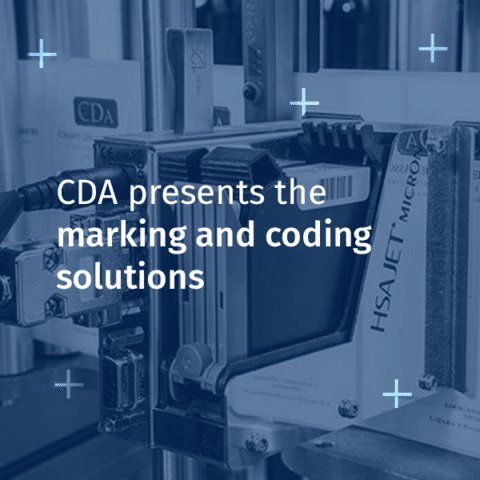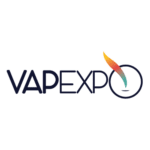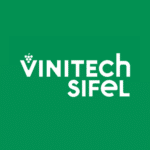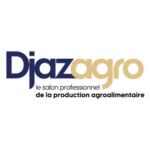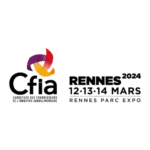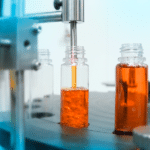Since 1991, CDA has supported many companies (from various industries) in their packaging projects. Thanks to the adaptation of our filling, capping and labeling equipment to our customers’ products, we are constantly developing our know-how. Today CDA offers coders and markers that can be integrated into CDA fillers and labelers.
We integrate different types of encoders or markers in our machines depending on your products.
Laser marking
Laser marking makes it possible to apply simple information such as a date, a serial number or even a time. Marking by means of a laser beam has many advantages: high precision, constant quality, high marking speed, versatility … Thus, laser marking technology ideally meets the needs of manufacturers with wide ranges of media to be coded, such as cartons, labels, glass and / or plastic. Sectors such as food, cosmetics but also pharmaceuticals appreciate this versatility of marking.
This technique prints in monochrome and is intended for industrial identification marking and not for clothing marking. No consumables are needed, so laser markers are more expensive, but perfect for large productions.
Inkjet marking
Inkjet marking technology makes it possible to print immediately on a multitude of media: labels, containers, etc. Several types of inks are available for monochrome printing (in black, white or yellow), some of which are based on water and other solvent-based ones (to mark plastic, glass or clear labels). Thanks to this technique, it is possible to print dates, serial numbers and small symbols on your products. This solution can also be used for your secondary packaging such as cardboard boxes.
Deflected jet marking is the top of the line of inkjet markers. It is ideal for companies with large productions because it combines quality (adapting perfectly to curved surfaces), and quantity.
All of these features make inkjet printing ideal for industries such as food, cosmetics but also pharmaceuticals, paint / varnish or chemicals.
Despite the variety of inkjet marking techniques, it is impossible to print below a container. In addition, without meeting certain usage deadlines or storage conditions, the ink may dry out and become unusable.
Thermal transfer marking
Thermal transfer marking is very effective, it allows bar codes, DLC or DLV to be printed using a ribbon that transfers the resin directly to the label during labeling. Thanks to different printheads, logo or letter marking is also possible. This technique optimizes production rates and is easily adapted to complete packaging lines, as well as to CDA automatic filling and labeling machines.
The thermal transfer encoder is suitable for all types of products, formats and industries: food (cans, bottles, jars, etc.), cosmetics (jars of cream, tube of ointment, etc.), brewery (bottle of beer), wine (wine bottles), e-liquid (electronic cigarette liquid bottles), paint / varnish (paint pots and buckets) and chemicals (cleaning products, detergent, etc.).
This technique prints in monochrome (black or white only) and is intended for product identification marking and not clothing marking.
Desktop printers
CDA also offers desktop printers capable of processing up to 4 colors while instantly printing professional quality labels. These printers combine excellent price / quality with great flexibility, making them ideal for small productions. Label sizes vary depending on the printer model, ranging from small labels for e-liquid bottles to large labels for paint cans. The tabletop printer remains a cumbersome solution, however; it is on a frame. However, the printed label strips are directly linked to the labeling machine.
For each product and containing the coding or marking needs may vary, please do not hesitate to click here to contact us, a sales representative will answer you and guide you in your packaging project.
